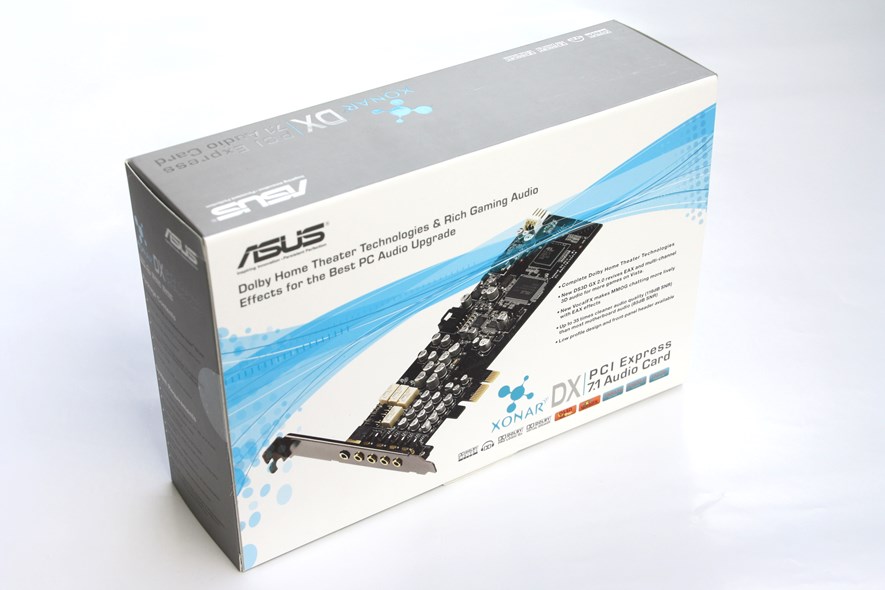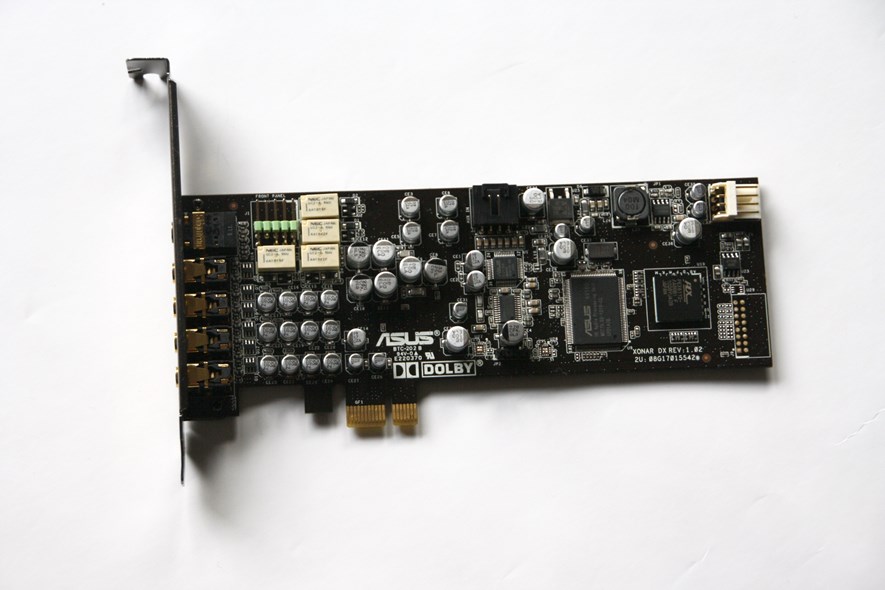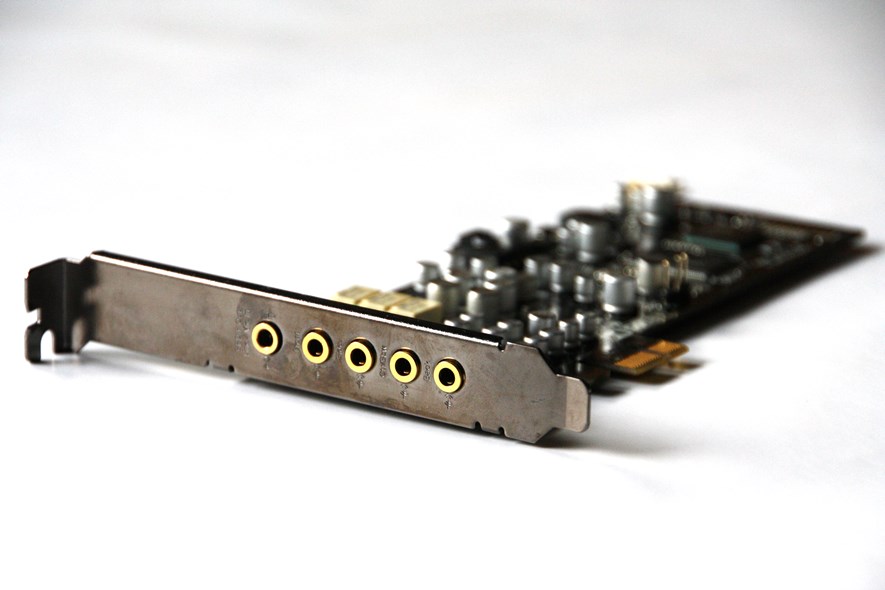
Soundcard - Asus Xonar DX
Discrete is better?
I have been using integrated sound for several years now, and I have been mostly satisfied with it. But the weaknesses of the Realtek ALC883 clearly show once you crank up the volume - it's not just loud static, you can actually hear the hard drive and CPU (?) working, through the speakers! The signal must be badly isolated or something. I figured a discrete solution would not suffer from the same problems, and turned to the Asus Xonar DX. Read on for a short review.
In the Box
The card was reasonably priced at around 55 EUR, so I decided to go for it. Opening up the box, I found an RCA cable inside, a Toslink optical adapter and a low profile bracket, plus a driver CD. As expected, the drivers were outdated and the other software on the CD basically useless. Just get the drivers directly from Asus web page. I first installed the drivers on the CD, then just upgraded to new drivers, which made the Asus Xonar Audio Center (where you make all settings for the card) to break. A quick search on the Asus forums revealed I was not the only one. Uninstalling and reinstalling the drivers did the trick, but it wasn't pretty.
Power hungry?

You can connect front panel connectors (microphone and front-out) to the card, which is actually quite useful. I don't have one though, would have been nice by Asus to at least provide a rear bracket with connectors.
Why so few connectors?

Since the card only outputs front sound to one port, having headphones and speakers connected at the same time is a hassle. Either 1) Get a splitter plug and connect both to the same port, or 2) Connect the headphones to the front panel - you will have to switch between front and back through software manually to get this to work though, since the card can only output sound to one port at a time.
And did I mention that the card does not support coaxial S/PDIF, which my ALC883 does?
By the way, many sound cards (the super cheap ALC883 comes to mind) can output sound to more than one port, or turn an output port into line-in. Just connect something to any port, and the software will ask what you would like to do. For example, you can use the rear speakers port as a line-in. Does the Xonar DX do this? No.
Karaoke
The card has a few controls for karaoke, and can add some reverb similar like what professional eqipment does. I gave it a go and first my impression was... that it wasn't very impressive. The card had some serious microphone input lag (half a second?) and ruined the experience completely. At this stage, I updated the drivers (which broke the Audio Center at first, as previously stated) which seemed to make things a bit better. I also noticed that the lag was less noticeable if you do not tick the "Listen to this device" checkbox in the Windows Recording Devices, but instead go to the "Custom" tab and tick "Monitoring" (can also be done using the Xonar Audio Center). The delay is now short enough to be acceptable, but the ALC883 is still faster. The reverb sounds good though and partially makes up for the shortcomings.
Sound quality
I was quite disappointed with the card so far, since it had increased my power draw, made my cable setup more complicated, and had not really improved karaoke. But here comes the good part (finally) - the background static is almost completely gone. No annoying sounds from other equipment leak through, the sound is clean and crisp.
Subjectively, mic recording quality also improved. About music listening, the sound quality is definitely good, but to be honest, I cannot really tell the difference between the DX and the ALC883.
Conclusion
There are many bad things I could say about this card, and only a few good. Luckily, getting rid of the static was important for me and the card pulled it off so I guess I'll stick to it. But recommend it? Not so sure about that.
Update: I returned the card for a refund.
Pros
- No background noise
- Karaoke reverb is fun
Cons
- Putting together Mic, Line-In and S/PDIF is just plain stupid
- No coaxial S/PDIF
- Can only output front speakers to one port at a time
- Microphone input lag almost kills karaoke
- Is an external power source really necessary?
0 Comments
Subscribe to new comments by RSS